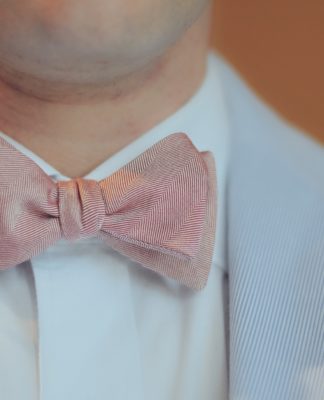Most of us accept that our senses can be deceived through illusion. After all, our brain is simply attempting to organize information and fill in the gaps.[1] Illusion is defined as something that is false or not real but that seems to be true—something that looks or seems different from what it is.[2] Through sensory distortion, humans commonly misinterpret one thing for another, as in perceiving time passing quickly or hearing a voice within the sound of running water. Similarly, emotional illusions also organize information in our brain. Often they represent something desired or missing in one’s life. In such situations we may see a lost loved one in the face of a stranger or interpret a sound we hear in the dark as their presence. We can imagine the improbable, but through illusion make it real. Does this make emotional illusion the brainchild of those who cannot face reality?
Undeniably, many people survive and even thrive on illusion. “Illusion is the queen of the human heart,” wrote Edna O’Brien through the narrative of a character who eloquently misquotes Voltaire.[3] Illusion may well be, as Voltaire actually described it, “the first of all pleasures.”[4]
Whatever stimulates an illusion interfaces with our present and past wishes, fears, hopes, dreams, and disappointments. An illusion can lead one to seek change, escape circumstances, pursue the desire for love, or engage in new experiences. Illusion enables us to have hope: it can encourage optimism when one is faced with potential defeat or an unpleasant reality. Moreover, shared illusions can create a bond, as in pleasurable fantasy-play between children or in the musings of lovers.
An emotional illusion can serve as a coping mechanism, yet it may also be self-defeating. In the early phase of romantic attraction, for example, a need to perceive the other as matching one’s vision, rather than recognize the unique, and possibly undesirable, qualities of a potential partner can result in disappointment. Although the other may be charged with not meeting one’s expectations or needs, the actual dissatisfaction resides in the contrast between one’s own illusions and reality.
Illusions may develop in childhood as an means of self-protection in response to vulnerability, but in adulthood they can interfere with meaningful involvement with others.[5] Such is the case in narcissism, where living within an illusion of grandiosity, entitlement, and invulnerability is protective and pleasurable, yet presents interpersonal challenges. Illusion, for narcissists, is necessary armor which protects them from unbearable internalized shame. Thus, challenges to the narcissist’s illusions generally lead to further defensive responses–withdrawal, avoidance, attack, denial, or rationalization–rather than promote an understanding of their behavior.[6]
Self-deception may be related to the human motivation to maximize positive emotion and and keep negative emotion to a minimum.[7] As a result, we may be inclined to hold an illusion as truth in matters of the heart or in our quest for pleasure. Nonetheless, whether something is an illusion or not may be irrelevant. The question is, does it lead us well?
[For information regarding my books, please see my website: marylamia.com]
Endnote
1 Jung, Y.M. & Shen, J. (2008). First order modeling and stability analysis of illusory contours. Journal of Visual Communication and Image Representation. 19, 42-55.
2 Merriam-Webster online dictionary, “illusion.”
3 O’Brien, E. (2011). Saints and Sinners. New York, NY: Back Bay Books, p.204.
4 In a version of the poem, La Pucella d’Orleans, Voltaire (1756) writes, “L’illusion est le premier plaisir”(Illusion is the first of all pleasures), a quote that is often misattributed to Oscar Wilde. See http://www.oscarwildeinamerica.org/quotations/illusion-first-of-all-pleasures.html
5 Riordan, R.W. (2012). The management of narcissistic vulnerability: Three case studies Pragmatic Case Studies in Psychotherapy, 8, 150-203.
6 See Kernberg, O.F. (1984). Severe personality disorders: Psychotherapeutic strategies. New Haven, CT: Yale University Press; andMasterson, J.F. & Klein, R. (1995). Disorders of the self: New therapeutic horizons: The Masterson approach. New York: Brunner/Mazel, Inc.
7 The affect theorist, Silvan Tomkins explains that we have evolved with an affect (emotional) system where some affects feel good and some feel bad. Thus, humans are motivated to maximize positive affect or to reduce negative affect. See Tomkins S.S. (1981). The quest for primary motives: Biography and autobiography of an idea. Journal of Personality and Social Psychology 41: 306-329.


 As clinical psychologist and psychoanalyst I work with adults, adolescents, and preteens in my Kentfield, California private practice. I am also a professor at the Wright Institute in Berkeley, California. Teaching the public about the psychology of human behavior has been something I've done for over 35 years. For nearly a decade I hosted a weekly call-in talk show, KidTalk with Dr. Mary, on Radio Disney stations, and have provided opinions in many media interviews and discussions.
My books include:
As clinical psychologist and psychoanalyst I work with adults, adolescents, and preteens in my Kentfield, California private practice. I am also a professor at the Wright Institute in Berkeley, California. Teaching the public about the psychology of human behavior has been something I've done for over 35 years. For nearly a decade I hosted a weekly call-in talk show, KidTalk with Dr. Mary, on Radio Disney stations, and have provided opinions in many media interviews and discussions.
My books include: 

















